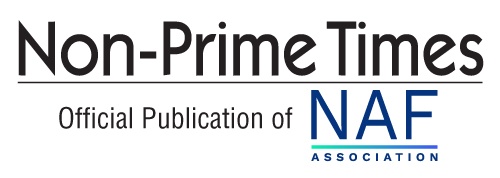Each month as CEO of a financial technology company, I host monthly “Your Voice” meetings that give all team members across the 650-plus person organization an opportunity to ask questions (anonymously or not) about anything they want.
Topics of interest include the impact of the economy and industry on our business, company benefits, and how to better serve employees and clients. Team members “vote up” questions they’d also like to see answered and I respond during a recorded, company-wide meeting shared on the intranet portal.
I touch on this in my Accountability in Action article from April 2023.
The number one question from the most recent meeting was:
Do you have any advice or guidance for team members that may be struggling with embracing the level of change adoption needed with our processes and tooling?
~ defi Team Member
As the question implies, organization-wide, our company is undergoing change in people, processes, and tools. Change can be difficult to embrace, in fact, roughly:
• 20 percent of people are change-friendly
• 50 percent sit on the fence
• 30 percent are resisters
To complicate matters, only 21 percent of U.S. employees strongly agree they trust the leadership of their organization.
I’m a change person. Like Winston Churchill, I believe “To improve is to change; to be perfect is to change often.” And I’m a trust person. One reason I offer my team the opportunity to ask what they want is I believe that transparency builds trust. Trust and change for the sake of continuous improvement are critical to a company’s success.
When change is clearly defined and successfully managed, performance goals are met, and a strong, positive corporate culture is in place, trust follows.
~ Gallup
So, what is my advice for team members struggling with change?
1. Focus on what’s essential.
2. Work toward continuous improvement.
3. Get involved.
What’s Essential
“Essentialism isn’t about getting more done in less time. It’s about getting only the right things done … about making the wisest possible investment of your time and energy in order to operate at our highest point of contribution.” – Greg McKeown
I have recommended everyone in my organization read Greg McKeown’s book “Essentialism: The Disciplined Pursuit of Less.” As a leader in your organization you may think your job is to get your team to do more. As a team contributor, you may think you have to prove your worth by accomplishing the greatest number of team tasks. But as McKeown points out, “there are far more activities and opportunities in the world than we have time and resources to invest in … and few are vital.”
Your teams should be encouraged to question what they’re being asked to do and why, to help your organization determine what the “right things” are and what their role is in getting them done.
Continuous Improvement
Continuous improvement involves making small incremental changes that add up to significant results. Also known as Kaizen and used by companies like Toyota for decades, continuous improvement recognizes there is always room for improvement. It involves:
• Improving tools and materials
• Improving people and relationships
• Improving the work environment
• Empowering team members to make changes that improve the bottom line
Get Involved
Of the change friendly, fence sitters, and resisters, which group do you think I identify with and appreciate the most? You’re right: the resisters. Why? They’re involved.
While I do appreciate those willing to embrace change as it comes, it’s the resisters who provide a perspective that a collective group in agreement might overlook. Don’t get me wrong. I’m not advocating for “resistance for resistance’s sake,” but I do think there’s value in disagreement and discussion when the ultimate goal is to reach consensus on the path forward.
However, you can neither embrace nor resist what you don’t understand. So, it’s critical that all seize or create the opportunity to learn, ask questions, and embrace and contribute to what the team has set out to accomplish.
Who’s Qualified to Lead Through Change
In his book, “Turn the Ship Around: A True Story of Turning Followers Into Leaders”, L. David Marquet chronicles his failures as a leader. As a Navy officer and nuclear-powered submarine captain, he once gave “an impossible order” that was attempted by his crew. When asked why they attempted to follow it, they answered, “Because you told me to.”
Do you want your team blindly following bad orders or acting as empowered leaders that create intelligent plans based on their expertise?
Marquet resisted the Navy’s typical leader-follower approach and set about a sometimes arduous process of creating leaders, and ceding control to the expertise of his team who truly knew better than he did.
If everyone in your organization is empowered to lead, who is there not to trust?



